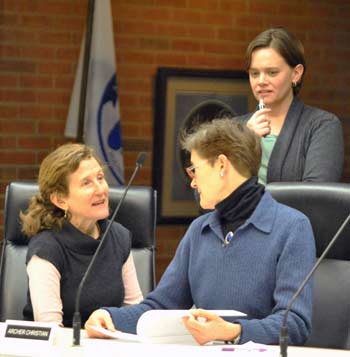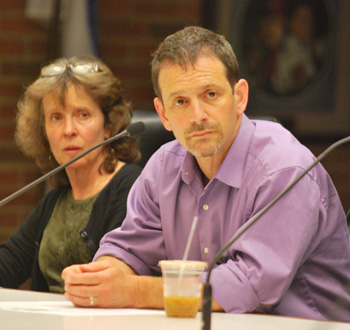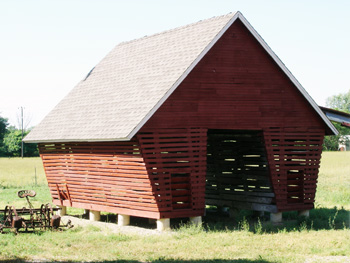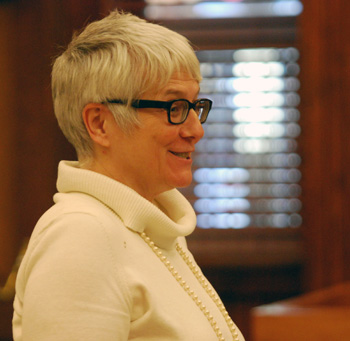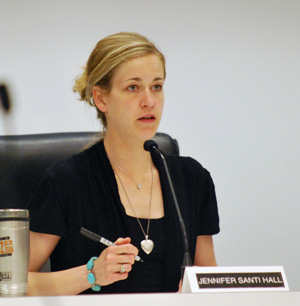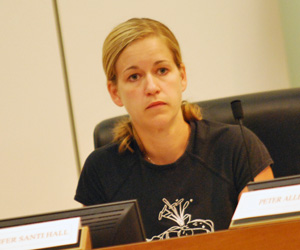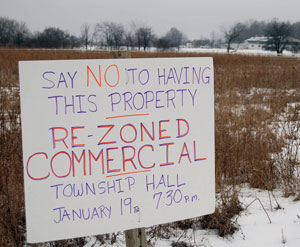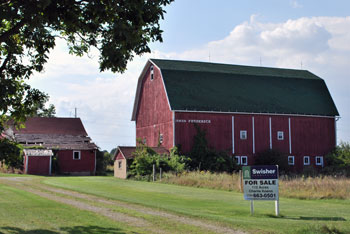County to Protect More Farmland, Nature Areas
Washtenaw County parks and recreation commission meeting (Feb. 12, 2013): The first meeting of WCPARC in 2013 kicked off when each member received a copy of a half-hour video history of the county park system, in honor of WCPARC’s 40th anniversary.

A section of Miller Creek runs through a property off of Geddes Road that the Washtenaw County parks and recreation commission might help preserve, in partnership with the city of Ann Arbor. The land is located in Ann Arbor Township. (Photos by the writer.)
Commissioners were then briefed on what WCPARC director Bob Tetens called a record monthly expenditure for his time with the commission: $3.9 million in January 2013, including $2.9 million for parks and recreation – primarily for capital improvements at Rolling Hills, Independence Lake and Sharon Mills parks – and $1 million for natural areas preservation.
Expenditures in January for the natural areas preservation program included acquiring land from the Ford Road Property LLC on the east side of Berry Road in Superior Township; for improvements at Trinkle Marsh, Spike, Hornback, and Nagle preserves; and for phase 1 due diligence on the proposed purchase of the Trolz property in Manchester Township.
The commission also approved taking the next steps on several additional natural areas preservation proposals. Those steps include applying for (1) federal funds to help cover the purchase of development rights on farmland in Superior and Lima townships, and (2) a state grant to help develop the Staebler Farm, located in Superior Township, into an active park. Commissioners also approved the purchase of a conservation easement on 82 additional acres from the Ford Road Property LLC in Superior Township.
Also discussed was a proposal to help the city of Ann Arbor buy the 8-acre Taylor property on Geddes Road, east of Huron Parkway. The land is immediately east of the city’s Ruthven nature area, and is seen as a priority because a section of Miller Creek runs through it. The creek is subject to flash flooding during heavy rains, and has been the focus of stormwater management efforts by the city and the county water resources commissioner. Conan Smith, a county commissioner who also serves on WCPARC, questioned whether this is an appropriate project for the county’s natural areas preservation program. He indicated that it might be better for the city to partner with the water resources commissioner on this project instead.
In other action, commissioners voted to increase fees at WCPARC facilities, including the Meri Lou Murray Recreation Center, and Independence Lake and Rolling Hills parks. A staff report indicated that the fees would still be lower than comparable public recreation facilities in this region. [.pdf of fee schedule]
WCPARC members were briefed about applications to fund eight projects through the Connecting Communities initiative, under which WCPARC helps pay for non-motorized transportation trails throughout the county. The city of Ann Arbor is among those applicants, asking for $300,000 to fund development of trails along the Allen Creek greenway, including at the city-owned 721 N. Main site. Final decisions will be made at WCPARC’s March meeting.
WCPARC members also re-elected their officers, set the 2013 meeting calendar, and got updates on two months’ worth of activities at the county’s parks and recreation facilities – including a report on flooding at the Meri Lou Murray Recreation Center in January, and steps toward developing a new recreation center in Ypsilanti.
The meeting was attended by six of the current nine-member commission. One vacancy remains to be filled on WCPARC by the Washtenaw County board of commissioners, which appoints all WCPARC members. A vote on that position is expected at the county board’s Feb. 20 meeting. [Full Story]




